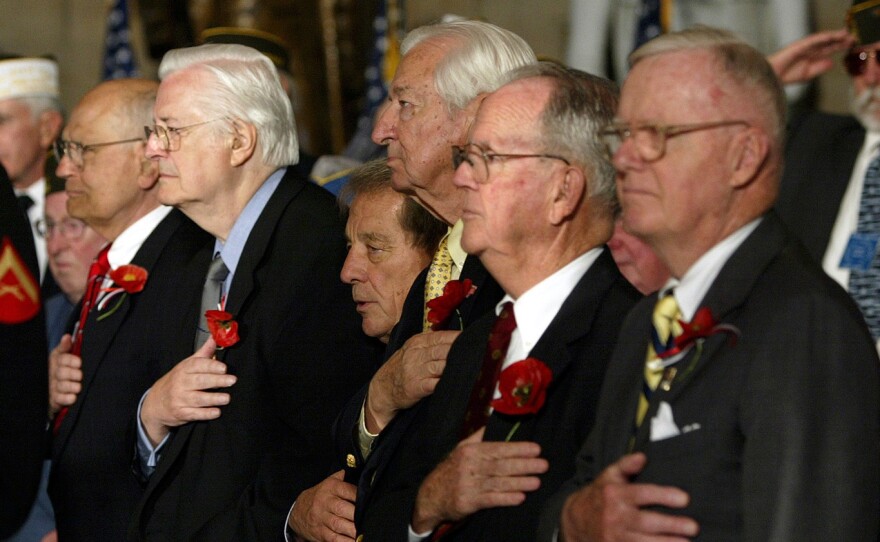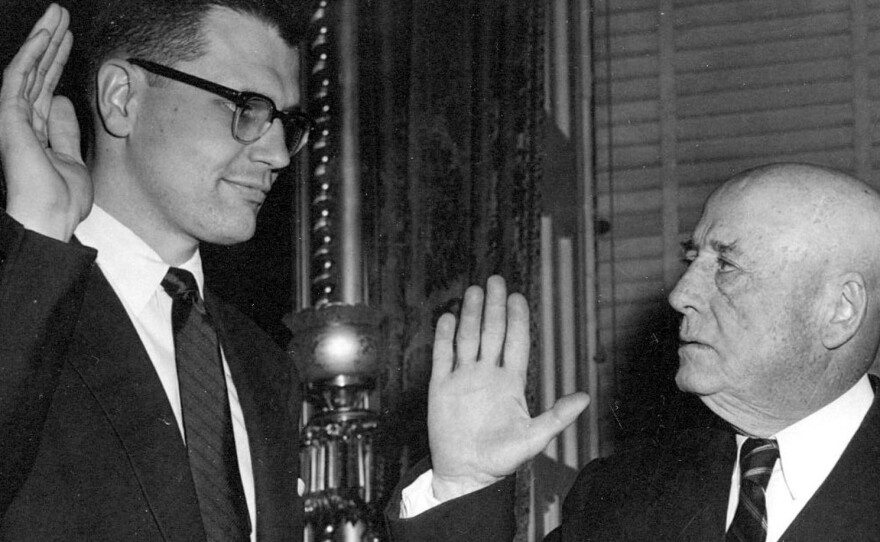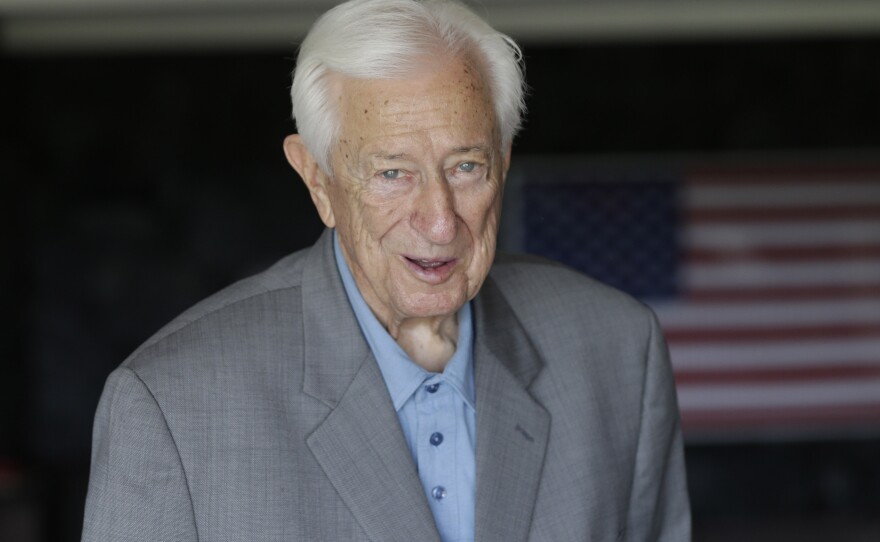




The World War II era is about to officially draw to a close in the United States Congress. This comes after seven full decades during which there was always a veteran of that war in the legislative body.
The last two World War II veterans will leave office at the end of the current session of Congress. They are 88-year-old Michigan Democrat John Dingell and his longtime friend, 91-year-old Republican Ralph Hall of Texas. Dingell, who represents southeast Michigan, was elected in 1955 and is the longest-serving member in the history of Congress. He decided not to seek re-election this year. Hall, who represents the corner of Texas that borders Oklahoma and Arkansas, is not retiring of his own volition. He ran for re-election but was defeated in a primary runoff in the spring.
They are the last to depart out of hundreds who served in the military during that war and who went on to careers in the U.S. House and Senate.
From torpedo boats to the halls of the Capitol
The first of the World War II veterans to serve in Congress arrived even before the war was over.
George Andrews, a lawyer and former district attorney, had run for Congress before and lost. But in 1944, the death of the sitting congressman meant there was an open seat, so he declared his candidacy even though he was still an active member of the U.S. Navy serving in Pearl Harbor. He could run, but he couldn't just pack up and go home to campaign. Additionally, he was forbidden, as a member of the service, to publicly take political positions.
U.S. House historian Matthew Wasniewski says the solution was to have Andrews' wife, Elizabeth Bullock Andrews, campaign on his behalf. He won and was sworn into Congress in March of that year, putting him, as Wasniewski says, "at front end of that wave" of World War II vets serving in office at the U.S. Capitol.
Two years later, when the war was over, the first big wave of World War II veterans came to Congress. The U.S. House of Representatives class of 1946 included some 70 members who had served in the war. Among them was John F. Kennedy, whose exploits as the commander of a torpedo boat in the Pacific were already well-known to the public thanks to a 1944 article in The New Yorker, written by John Hersey.
It's a tale that would, years later, get blockbuster Hollywood treatment in a film called PT 109.
Other veterans elected in '46 included some of the biggest names in 20th century American politics, including Richard Nixon and future House Speaker Carl Albert. One election later, in 1948, another future president, Gerald R. Ford, entered Congress.
The number of veterans kept growing, and they moved into the top leadership positions. By the 1970s nearly 4 of 5 members of Congress were veterans, the majority from World War II. Today, only 1 in 5 is a vet.
House historian Wasniewski says the shared experience of World War II brought a moderating influence to their politics.
"The House has always been a partisan place; from the beginning it's been partisan," he says. But "that period from the late 1940s to early 1970s when that World War II group hits their peak [by the numbers] is in a lot of ways the exception to the rule when it comes to bipartisanship."
The final two: Reps. Dingell and Hall
Dingell was just 15 years old when he got an up-close glimpse of a pivotal moment in the war's history. In December 1941, he was working as a page in the U.S. House chamber when President Roosevelt delivered his "Day of Infamy" speech the day after the attack on Pearl Harbor. Dingell enlisted when he turned 18 in the summer of 1944. He notes that he never saw combat and "never had a particularly romantic or exciting assignment."
Dingell eventually went to officer candidates school and says he would very likely have been in the wave of an American ground attack on Japan. It's an attack that never happened because of President Truman's decision to drop the atomic bomb. Dingell says that probably saved his life.
In an interview with NPR in his office at the Capitol, Dingell spoke of the success and importance of the GI Bill, which paved the way for millions of veterans to go to college, get a mortgage or get a loan to start a business.
Dingell says that Truman "thought it was a great thing. Republicans thought it was a great thing. Democrats thought it was a great thing. And the end result was a great achievement for the United States."
Both Dingell and Hall, a former Navy pilot, went to college on the GI Bill. Dingell decided not to run for re-election this year. Hall, who has served 17 terms, lost in the Republican primary in May. In December 2012, Hall became the oldest person ever to serve in the House.
They are old friends, and now the final of the hundreds of World War II veterans to serve in Congress. They are — as Dingell has described himself and Hall — the last leaves on the tree.
Copyright 2014 NPR. To see more, visit http://www.npr.org/.






